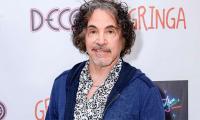No discussion about the first 20 years of independent India can be complete without talking about B R Ambedkar – an economist and jurist who became more of a social reformer than political leader. He led the committee that drafted the constitution of India and was also the first minister of law under prime minister Nehru.
Ambedkar’s renunciation of Hinduism inspired the Dalit politics and movement for their rights. One of the most educated cabinet members of the Nehru government in the early years, he advocated strongly for economic and political rights of Dalits and other backward classes. On numerous occasions he had openly disagreed with Congress and its leaders such as Gandhi and Nehru but remained in the party to contribute to the new constitution. Having played a leading part in outlawing discrimination against ‘untouchables’, he resigned in 1951 for his apparent lack of influence in the government.
Ambedkar’s radical proposals to deal with the caste system ignited hostility from the upper castes which represented Brahmanical patriarchy. His proposals for the Hindu Code Bill and suggestions for a fundamental restructuring of property relations inspired other leaders who then challenged – or pretended to challenge – the status quo and acted as champions of Dalits and other backward classes. The future landscape of India and its many states owes a lot to his alertness to the issues that had remained on the periphery for long. He asked Dalits and other backward people in India to agitate, educate, and organize. He died in 1956 at the age of 65.
So in the first 20 years of independent India there were strands of caste politics that Ambedkar and his followers led; of communist politics that various communist parties and groups were leading such as the CPI and CPI-M; there were those who claimed to be socialists such as Jayaprakash Narayan, Ram Manohar Lohia, and George Fernandez; added to this were regional nationalists in various states who championed their own ethnic and linguistic causes; and finally there were Hindu nationalists who believed in Hindu supremacy and strived to establish a Hindu state as opposed to a secular state.
All these diverse groups by the late 1960s were unable to dislodge Congress from the central government, though they could strike a dent or two in some states. As discussed in my previous column, the 1967 general elections in India retained Congress in power with a reduced majority. In many states there were setbacks and Congress could not form its government in seven of them. To deprive Congress of power the above-mentioned groups played a significant role, but only after they could form a joint strategy.
The Samyukta Vidhayak Dal (SVD) – joint legislative party – emerged in several Indian states after the 1967 assembly elections. It comprised outfits such as the Bharatiya Kranti Dal of Charan Singh of UP formed in 1967, the Samyukta Socialist Party of George Fernandez formed in 1964, the Praja Socialist Party of Jayaprakash Narayan formed in 1952, Jana Sangh of S P Mukherjee that split from the Hindu Mahasabha in 1951, and Swatantra Party of Rajagopalachari formed in 1959. They joined hands to oppose the Congress party that itself was facing inner conflicts under Indira Gandhi and returned to power with the lowest majority since independence. It lost power in Bihar, Kerala, Madras, Orissa, Punjab, UP, and West Bengal, with narrow victories in some other states.
There was large-scale defection of Congress members to these opposition parties. The disparate groups in various states formed joint legislative parties that ultimately replaced Congress to form governments. These were coalitions of legislators rather than parties outside the state assemblies. It was not the same coalition in all states. For example, in UP Charan Singh broke away from Congress with 17 members of the legislative assembly (MLA) and formed Jan Congress which later on merged with the BKD. He became the leader of the joint legislators party of multiple opposition parties and assumed office as the first non-Congress chief minister of UP but lasted for just 10 months.
That was the beginning of a landmark process that led to the rise of the so-called Other Backward Classes (OBCs) as a major political force. The non-Congress governments that emerged in seven Indian states had varying degrees of success. In Bihar and UP they lasted for hardly a year whereas in Kerala the communists ruled for ten years in various coalitions that first Namboodiripad of the CPI-M led as chief minister for two years till 1969, and then Achutha Menon of the CPI led as CM till 1977. In Madras (renamed in 1967 as Tamil Nadu) Congress could never return to power from 1967 to date.
In Orissa, the government of the Swatantra Party and in Punjab of Akali Dal lasted for four years each. In West Bengal in 1967, a United Front emerged comprising Bangla Congress, CPI-M and CPI. Ajoy Kumar Mukherjee as CM and the CPI-M’s Jyoti Basu as deputy chief minister. This government lasted for just eight months before Indira Gandhi imposed president’s rule in West Bengal. In India, 1967 was also significant in that it ushered in the first Muslim president to hold office. Indira Gandhi selected Dr Zakir Hussain to contest the election while the united opposition parties nominated retired chief justice K S Rao as their presidential candidate.
It is worth mentioning that for the post of president, Nehru had set a high bar and opted for highly qualified and well respected Rajendra Prasad and then Dr Radhakrishnan to be head of state. The two presidential candidates in the 1967 elections were equal heavyweights. Dr Zakir Hussain was already the vice-president of India under Radhakrishnan as president from 1962 to 1967. Justice S K Rao’s claim to fame was his landmark decision to reverse the Supreme Court’s earlier decision that had upheld parliament’s power to amend all parts of the constitution, including those that related to fundamental rights.
Though Dr Zakir Hussain won the elections, he died in office in 1969 – leaving India to a constitutional crisis. Vice-president V V Giri became the acting president, pending elections for a new president. Giri wanted to run for president and for that he had to resign, but there arose a constitutional problem. Where was he supposed to submit his resignation? There was no president and vice president and he himself was the acting president. The constitution makers of India had not anticipated such a situation. So a new law was brought in, making a provision for the chief justice of India to step in, if there were no president or vice-president.
President Zakir Hussian had appointed Justice Mohammad Hidayatullah as chief justice of India in 1968 and that was an interesting time for India when its president and chief justice both were Muslim. Congress had elevated the previous two vice-presidents of India – Dr Radhakrishnan and Dr Zakir Hussain – to the president’s office, so vice-president V V Giri should have been a safe bet for Indira Gandhi. But the All India Congress Committee – the central decision-making body of Congress – had more senior members who disagreed with Indira and supported speaker of Lok Sabha Neelam Sanjiva Reddy as presidential candidate. It was an open rebellion, but Giri narrowly won.
Then Indira Gandhi took into state control 14 major banks through a Bank Nationalization Act in 1969 and made paltry compensations payable in bonds to mature after ten years. Morarji was not pleased and Indira Gandhi removed him from his finance portfolio. The old guards such as Kamraj and Desai were not amused and in November, 1969 – within three months after the presidential bout – Congress expelled the prime minister from the party for violating party discipline.
To be continued
The writer holds a PhD from the University of Birmingham, UK. He tweets @NaazirMahmood and can be reached at:
mnazir1964@yahoo.co.uk
Gandhara Corridor must be announced today, not tomorrow, to promote interfaith harmony
This was first introduced in Minnesota in the US in 1983
This awakening has also come at a critical time when the country is teetering on the brink of disaster
There is no guarantee that abolishing the search committee would lead to the selection of better VCs
Indian Prime Minister Modi attends the inauguration of the Global Trade Show ahead of the Vibrant Gujarat Global...
President Asif Ali Zardari inspecting the guard of honour at Islamabad's Aiwan-e-Sadr on March 11, 2024. — X/@PresOf...







